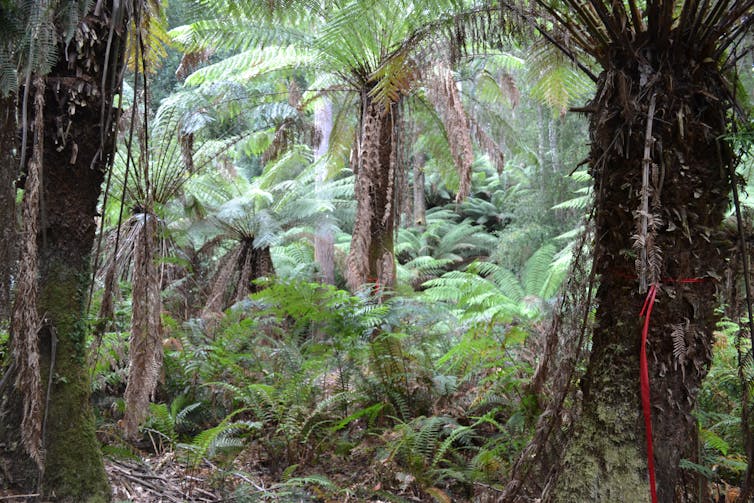Large, older trees have been found to grow faster and absorb carbon dioxide more rapidly than younger, smaller trees, despite the previous view that trees’ growth slowed as they developed.
Research published in the journal Nature this week shows that in 97% of tropical and temperate tree species, growth rate increases with size. This suggests that older trees play a vital role in absorbing carbon dioxide from the atmosphere.
William Morris, a PhD candidate from the University of Melbourne involved in the study, says that prior to the study, the common assumption was that as trees aged, their growth rate and carbon absorption decreased. Morris explained that the belief came from two different lines of evidence:
“First, it has been shown that at the whole forest level, young forest acquires mass faster than old-growth forest. Second, studies have shown that the leaves of older trees are less efficient at photosynthesising than the leaves of younger trees.”
But the new study, which involved 403 tree species and was led by authors from the US Geological Survey, examined carbon storage at the level of individual trees rather than forests.
The findings highlight the value of large, older trees, which have been declining in number, as important carbon sinks.
“Previously we thought of big old trees as simply carbon stores. But now we know that not only are they storing lots of carbon, they are also sequestering more carbon and faster than smaller trees,” said Morris.
David Lindenmayer, a professor of environment at the Australian National University, described findings of the study as “immense”, with implications of global significance.
“It highlights another reason why it is really important that we grow as many areas of forest through to being old growth forests as possible,” he said.
“The more carbon we can store in forests, the more chance we have of reducing the mega-effects that are going to arise from massive climate change. Storing large amounts of carbon in forests is absolutely critical to that and the way you do that is you have big, old trees.”
Bill Laurance, a professor at James Cook University’s Centre for Tropical Environmental and Sustainability Studies, agreed that the study reinforces the importance of large, older trees for absorbing carbon.
“That underscores the importance of saving old-growth forests, which harbour most big old trees, if we want to have the maximum benefit for slowing climate change,” he said.

The study is also expected to have implications for forest management plans. Morris explained that the new findings can change how individual trees are managed.
“As we now know that the biggest trees are the most valuable as both carbon stores and carbon sinks. If a manager’s goal is to maximise carbon uptake, then maintaining larger trees may be an efficient way to do so,” he said.
Lindenmayer said that the study highlights flaws in forest policy in Victoria and Tasmania, where old-growth forest is often cleared for pulp and timber purposes.
“Native forests, in terms of their value as carbon storage, significantly outweigh their value as pulp and timber. When you add that to the value of biodiversity and water, it’s pretty clear what forest policy should be,” he said.

